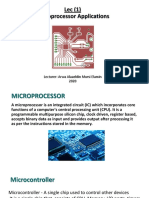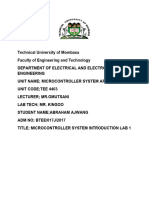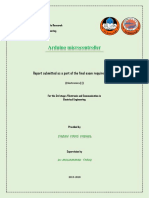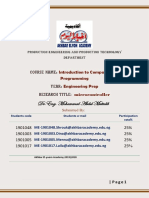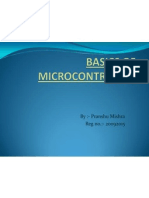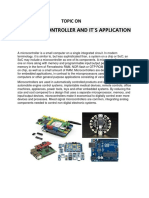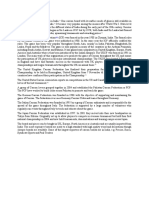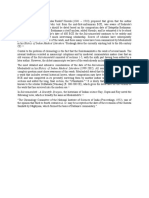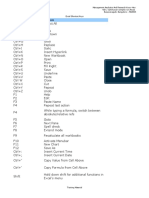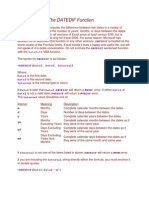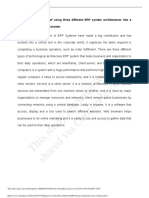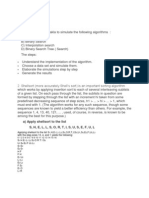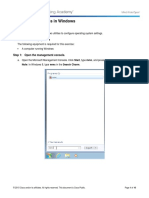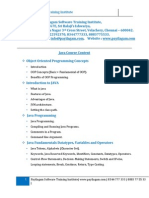0% found this document useful (0 votes)
64 views2 pagesMicrocontroller
A microcontroller is a single-chip microcomputer fabricated from VLSI technology. It contains memory, input/output ports, timers, and a processor on a single chip to control embedded systems. Microcontrollers are available with different word lengths and are used to control functions in devices like appliances, robots, vehicles, and other gadgets. The basic structure of a microcontroller includes a CPU for processing data, memory for storing programs and data, I/O ports for interfacing with external devices, timers for counting and timing operations, and analog-to-digital converters to convert analog signals to digital.
Uploaded by
JK CreationCopyright
© © All Rights Reserved
We take content rights seriously. If you suspect this is your content, claim it here.
Available Formats
Download as DOCX, PDF, TXT or read online on Scribd
0% found this document useful (0 votes)
64 views2 pagesMicrocontroller
A microcontroller is a single-chip microcomputer fabricated from VLSI technology. It contains memory, input/output ports, timers, and a processor on a single chip to control embedded systems. Microcontrollers are available with different word lengths and are used to control functions in devices like appliances, robots, vehicles, and other gadgets. The basic structure of a microcontroller includes a CPU for processing data, memory for storing programs and data, I/O ports for interfacing with external devices, timers for counting and timing operations, and analog-to-digital converters to convert analog signals to digital.
Uploaded by
JK CreationCopyright
© © All Rights Reserved
We take content rights seriously. If you suspect this is your content, claim it here.
Available Formats
Download as DOCX, PDF, TXT or read online on Scribd
/ 2







